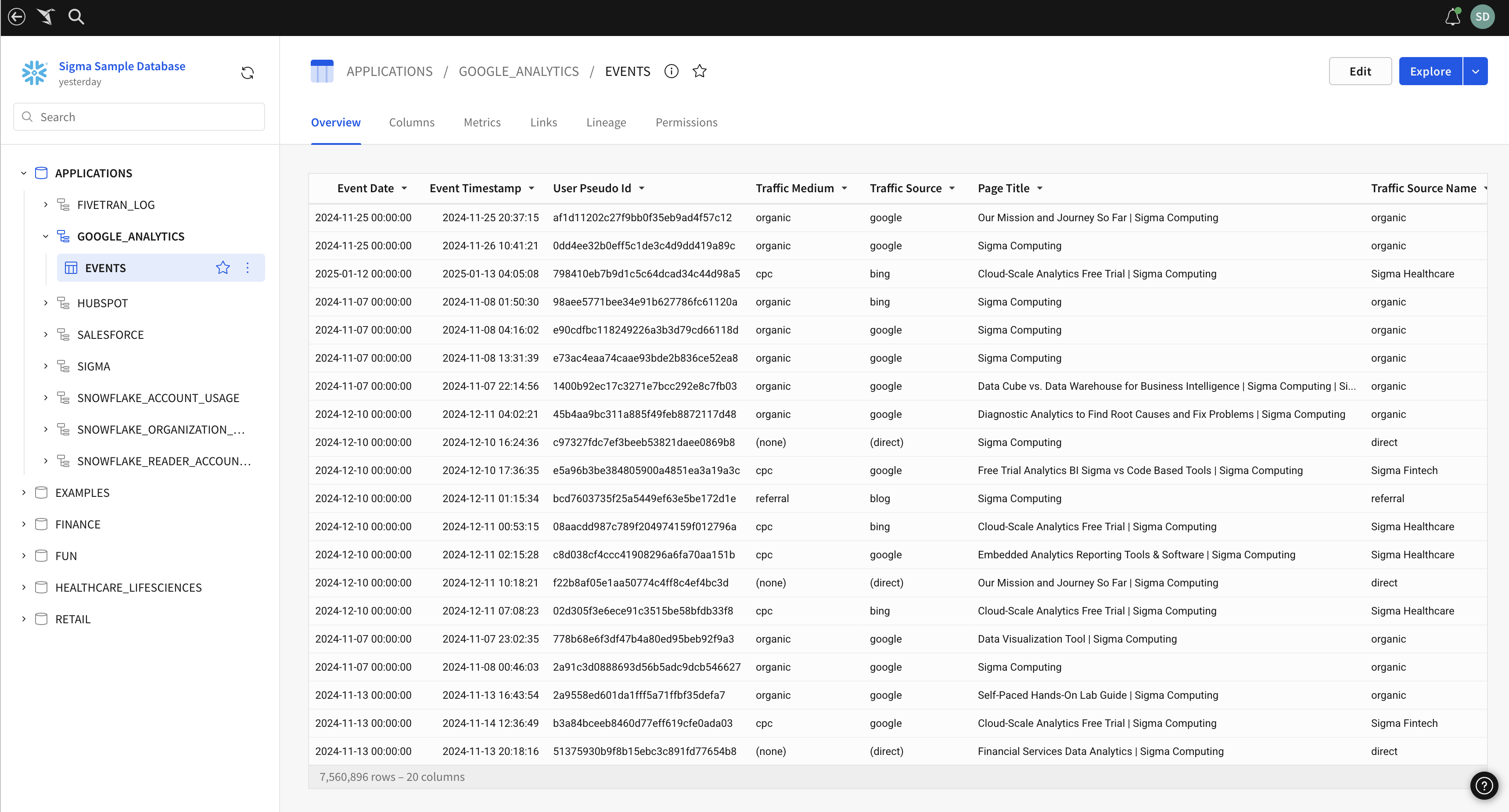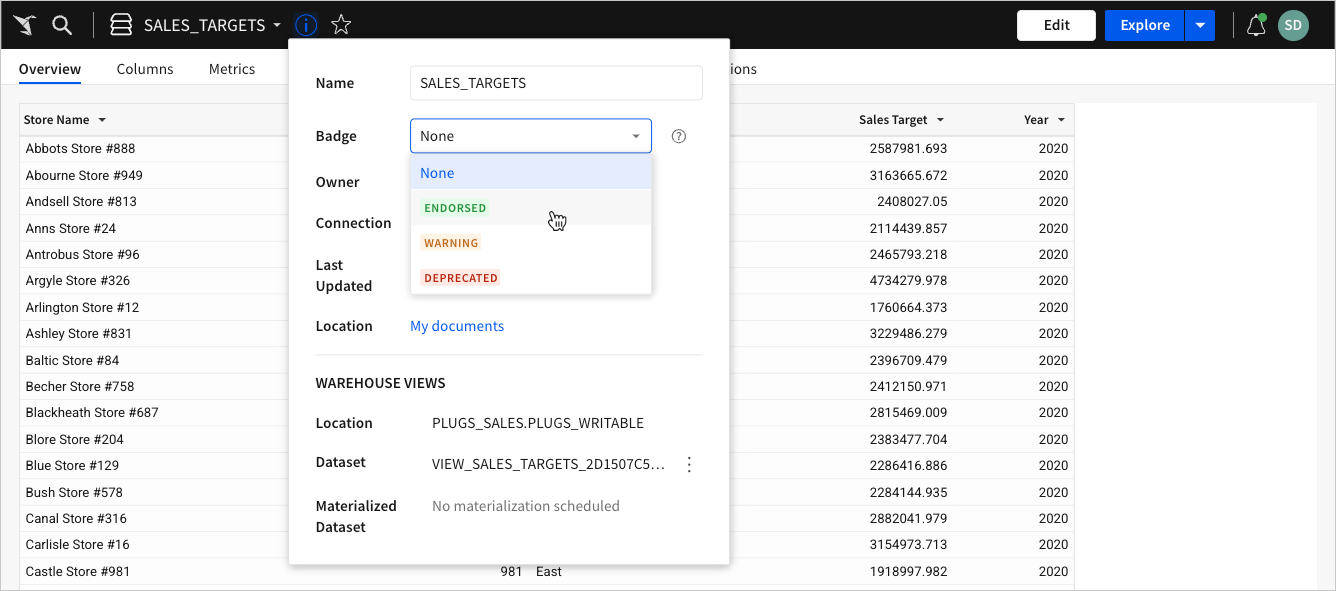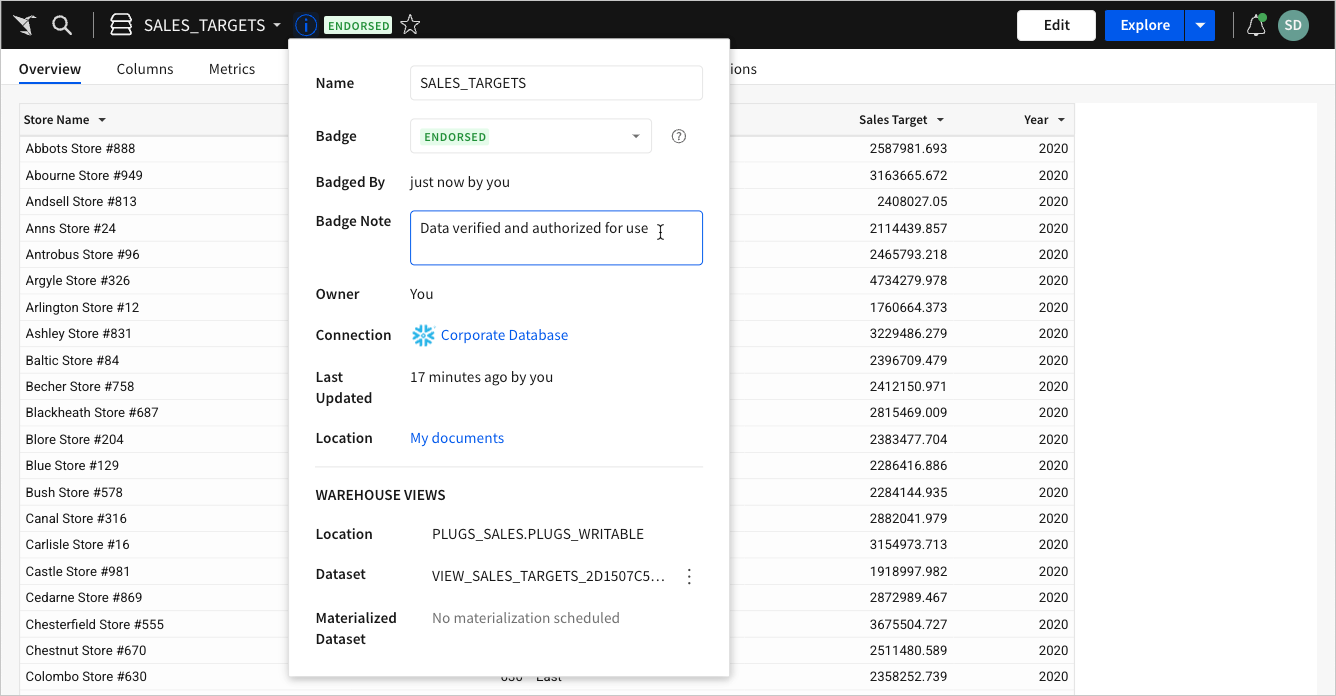Create and manage datasets (Deprecated)
Datasets are deprecated. Starting June 2, 2026, you will no longer be able to create datasets or edit existing datasets. Migrate your datasets to data models and update any documents that use datasets as a data source to use a different source. See Migrate a dataset to a data model.
If you want to model your data in Sigma, you can create a dataset. Creating a dataset allows you to bundle formulas, data transformations, filters, groupings, and parameters into a rich data source that others can build on. You can also materialize datasets, helping accelerate data analysis.
You can create a dataset from a table in your data platform, from a CSV file, or from a custom SQL statement:
User requirements
To create and manage datasets, you must be assigned an account type with the Create, edit, and publish data models permission enabled.
Create a dataset from a table
To create a dataset from a table in a connected data source:
-
From Sigma Home, select Connections to open the list of connected data sources.
-
Select the data connection with the data catalog that you want to view.
-
In the left navigation panel, search or browse the data catalog to locate the table.
-
Select the table name to open the table.

-
Next to Explore, select the caret (
) to Use this table, then choose Create Dataset.
-
Name the dataset and choose a location in which to save it, then click Create.
Modify dataset metadata
You can modify the metadata of the dataset, adding a description with usage guidance, provide documentation for specific columns, or apply a badge, for example, to label the dataset contents as high quality, deprecated, or irrelevant.
Add a dataset description
To add a description to the dataset:
- Open the dataset, then select Edit.
- Next to the dataset name, select More info (
).
- In the Description field, enter a description for the dataset.
- To save the description, publish the dataset.
Add or update a dataset badge
Add or update a certification badge to indicate the status, quality, and reliability of the data.
-
Open the dataset.
-
In the header, select More info (
).
-
In the popover, select an option from the Badge dropdown.

-
(Optional) When you select a badge, the popover displays the Badge note field. Add a note to provide context about the badge.

The badge is automatically saved and immediately reflected in the dataset header.

Delete a dataset
To delete a dataset you must be the owner of the dataset, have Can edit access to the dataset, or be assigned the Admin account type.
- Next to the dataset name, click the caret (
), then click Delete....
- On the Confirm Deletion modal, click Delete.
Recover a deleted dataset
To recover a dataset that has been deleted, you must be the owner of the dataset or have the Admin account type.
- Go to your
Home page.
- In the navigation menu, select
Trash.
- In the Trash page, search the list of deleted documents and click the one you want to recover. You can sort the Name, Deleted on, or Deleted by columns to help identify the applicable document.
- In the Document has been deleted modal, click Recover. Sigma immediately opens the recovered document.
Updated 8 days ago
